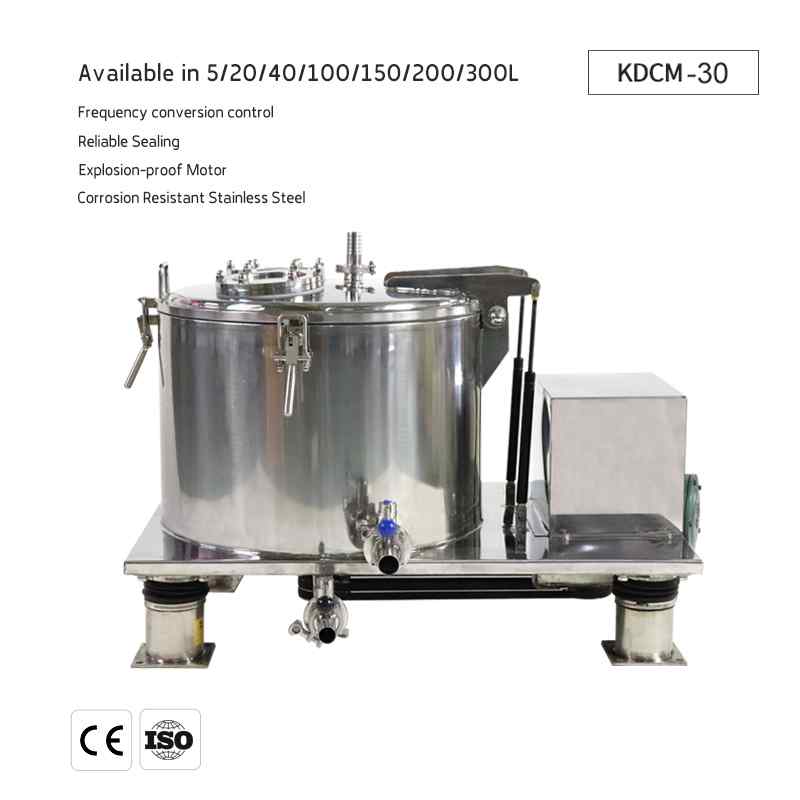How to choose a centrifuge
Centrifuge is widely used in biomedicine, petrochemical, agriculture, food hygiene and other fields. Centrifuge uses the difference in sedimentation speed of different substances in the centrifugal force field to realize the analysis and separation of samples.

Centrifuge is a high-tech product that integrates multiple disciplines and multiple technologies. There are many manufacturers and products, so you should check it out when selecting models. The factors to be considered are the following:
1. Rotation speed: The centrifuge is divided into low speed centrifuge (30000 rpm / min) according to the maximum speed. min), each centrifuge has a rated maximum speed. The maximum speed refers to the speed under no-load conditions, but the maximum speed varies according to the type of rotor and the size of the sample quality. The maximum speed of the selected centrifuge is higher than the target speed.
2. Temperature: Some samples (such as proteins, cells, etc.) will be destroyed in a high temperature environment, so you must choose a refrigerated centrifuge. The refrigerated centrifuge has a rated temperature range.
3. Capacity: How many samples need to be centrifuged each time and how much capacity each sample tube needs. These factors determine the total capacity of a centrifuge. Simply put, the total capacity of the centrifuge = the capacity of each centrifuge tube × the number of centrifuge tubes Number, total capacity and workload are matched.
4. Rotor: There are two main types of rotors in the centrifuge. Horizontal rotor: The hanging basket is in a horizontal state and is at right angles to the shaft during operation. The sample concentrates the sediment on the bottom of the centrifuge tube: Angle rotor: The centrifuge container and the shaft are at a fixed angle , The sample concentrates the sediment on the bottom of the centrifuge tube and the side wall near the bottom. If you want the separated samples to concentrate on the bottom of the centrifuge tube, choose a horizontal rotor. If you want the sample to concentrate on the bottom of the centrifuge tube and on the side wall near the bottom, choose an angular rotor.
5. Performance:
Anti-corrosion performance
The materials separated by the centrifuge are generally corrosive, and the materials of the parts in contact with the materials must meet the requirements of corrosion resistance to ensure safe use. The type of structural material (304, 321, 316L, titanium plate), sealing ring, gasket material, surface treatment measures (plastic lining, rubber lining, surface spray coating), and the material of the filter cloth, etc. should be selected when selecting determine. The nature of the material (chemical properties, temperature during separation, etc.) can be informed to the manufacturer during the selection, so that the manufacturer can make recommendations for the selection of centrifuge materials according to the characteristics of the separated media, and indicate in the order to ensure Anti-corrosion requirements of centrifuges.
Explosion-proof performance
If the materials (or environment) processed by the centrifuge contain flammable and explosive substances such as organic solvents, the centrifuge should have explosion-proof performance. The explosion-proof performance depends on the explosion-proof requirements (grades) of the process. In the past, the explosion-proof occasions involved only proposed the configuration of explosion-proof motors. In the past two years, most of the occasions where the processed materials contain organic solvents such as solvents have put forward the requirements for nitrogen protection. In fact, in order for the centrifuge to achieve real explosion-proof, various measures must be taken in terms of machinery, electrical control, and accessory configuration.
Separation performance
Separation performance is the most basic function of the centrifuge, including separation effect, washing effect, processing capacity, automation degree, etc. When ordering and selecting, it is difficult to determine the final separation effect due to the difference in material properties, including the viscosity, particle size and distribution, density, solid-liquid ratio of the slurry, etc., generally speaking, the separation factor is An important factor affecting the separation effect of the centrifuge. The separation factor is the ratio of the centrifugal force to the gravity of the material to be separated in the centrifugal force field, and it is related to the rotating drum speed and the drum diameter.


